Expeditions MudRunner: How to drive through water?
Various bodies of water are one of the main difficulties you will encounter in Expeditions A MudRunner Game. On this page we will give you tips on how to deal with them.
The maps in Expeditions A MudRunner Game hide a number of dangers that you must be prepared for during missions. Steep climbs, protruding and sharp rocks or deep chasms are just part of them. However, one of the more treacherous activities is crossing water bodies. A moment of inattention or poor assessment of the situation can easily sink the vehicle you are driving and prematurely end your journey. On this page, we will present you with a number of tips that will make the fight against the element much easier.
How to prepare for crossing water?
Before driving on wet terrain, it's worth preparing for it. After selecting your truck, go to the modifications section, where you ca make some important changes that will help you deal with water.
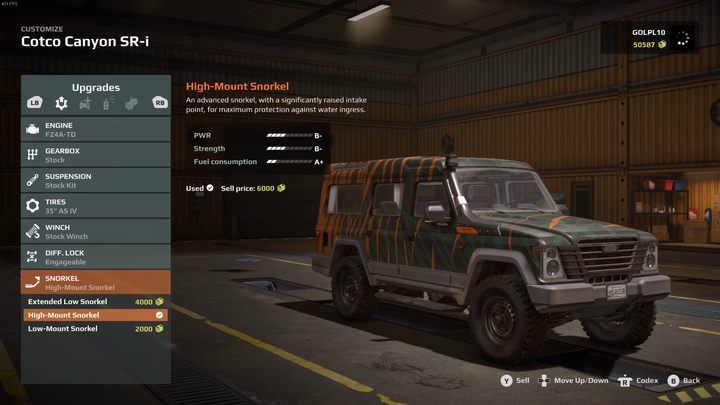
A mandatory element of truck equipment that may come into contact with deep water is a snorkel. This specialized pipe system raises the engine's air intake, significantly reducing the likelihood of engine flooding. The snorkels available in the game vary in price, but even the cheapest model will significantly increase your chances in the field.

Choosing the right tires will be equally important. Where there is water, there is probably mud, so pay attention to tires designed specifically for driving on wet, muddy terrain. Note that some tire sets may require a suspension lift.
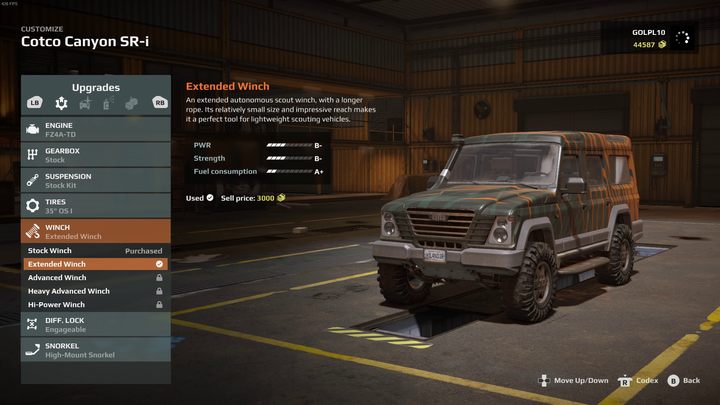
In addition to the mentioned ones, it is also worth reviewing other potentially useful modifications. A longer and stronger winch can save you if you get stuck in the middle of a large pond, and a reinforced engine will provide you with the power to overcome difficult terrain.
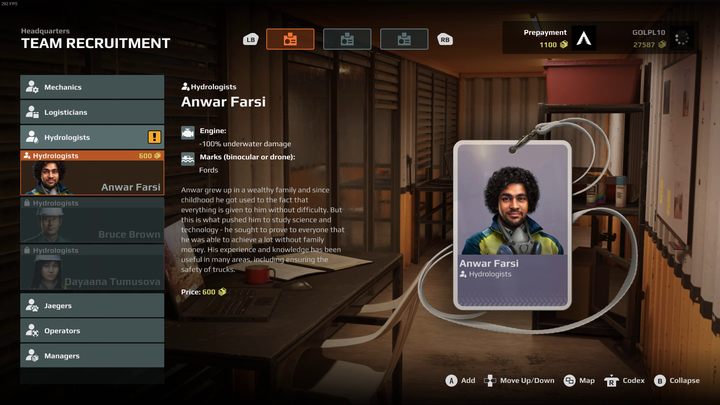
Also check the staff screen before heading out. Among the specialists available for hire, you will find several hydrologists whose special skills will help you in wet areas. The ability to use a winch underwater or improved sonar can determine the failure or success of an expedition.
How to wade?
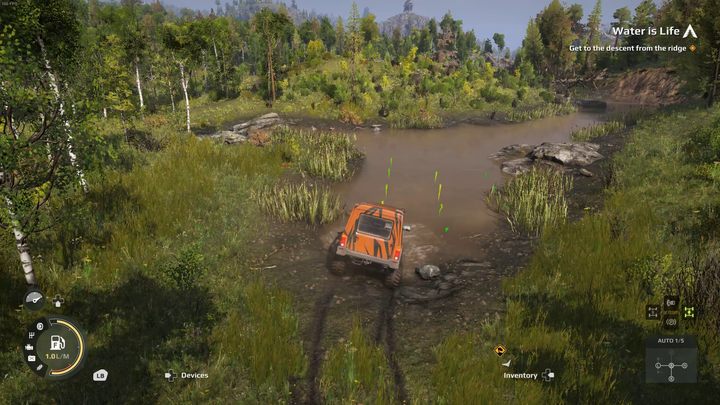
Before entering a body of water, be sure to use ultrasonic sonar. This specialized tool will help you estimate the depth of water in the area. Take some time to look around the shore and choose the narrowest place to cross, with the bottom as shallow as possible. Also pay attention to whether there is a ramp gentle enough on the other side of the tank to be able to drive out onto land.

Don't stop in the water. If you are crossing, e.g. a river and the water current is pressing against you, position yourself at a slight angle to it. If you feel lost, you can turn the sonar back on at any time to get a feel for the bottom and decide on a further path.
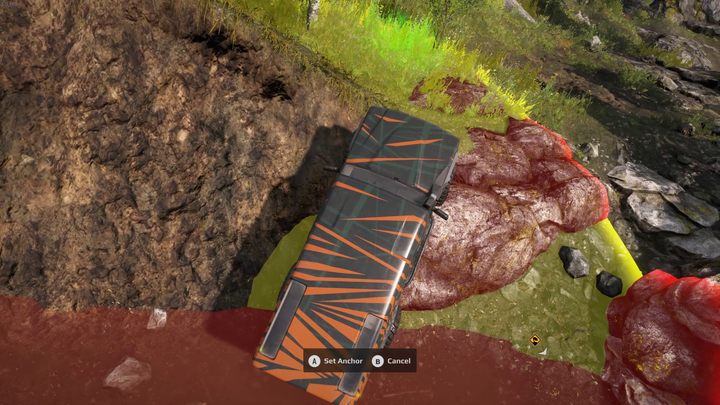
When you manage to reach the shore, slowly start leaving the water area. Here it may be necessary to use a winch, which will make the process much easier. The banks are often full of muddy sludge, meaning the right tires are essential in such a situation.
- Expeditions MudRunner Guide
- Expeditions MudRunner: Game Guide
- Expeditions MudRunner: FAQ
- Expeditions MudRunner: How to pull the first truck out of the mud?
- Expeditions MudRunner: How to build a bridge?
- Expeditions MudRunner: What are the differences between regions?
- Expeditions MudRunner: How to switch between trucks?
- Expeditions MudRunner: How to hire specialists?
- Expeditions MudRunner: How to make money?
- Expeditions MudRunner: How to drive through water?
- Expeditions MudRunner: FAQ
- Expeditions MudRunner: Game Guide
You are not permitted to copy any image, text or info from this page. This site is not associated with and/or endorsed by the developers and the publishers. All logos and images are copyrighted by their respective owners.
Copyright © 2000 - 2025 Webedia Polska SA for gamepressure.com, unofficial game guides, walkthroughs, secrets, game tips, maps & strategies for top games.
